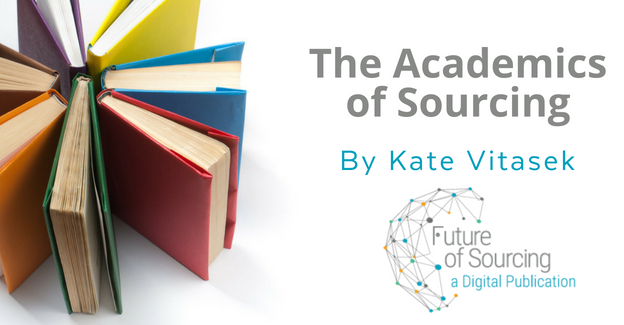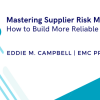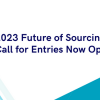If you’ve been in the outsource industry for more than five minutes you probably know that buyer-seller relationships are, well, complicated. And just when you think you have the collaboration thing nailed, more complications can ensue.
Verónica H. Villena (assistant professor of supply chain, Pennsylvania State University), Elena Revilla (professor of operations, Instituto de Empresa Business School), and Thomas Y. Choi (professor of supply chain management at Arizona State University), in a 2010 Journal of Operations Management article, found that there’s both a bright and a dark side to highly collaborative relationships.
First: I want to say kudos to the trio for their work to define the term “social capital.” They define social capital as a value asset stemming from access to resources made available through social relationships across three dimensions: cognitive (e.g., shared culture and goals), relational (e.g., trust, friendship, respect, and reciprocity), and structural (e.g., social ties). Villena, Revilla and Choi show that each of these social capital components have the power to positively influence performance outcomes.
Their findings show:
- The strength of social relations (relational capital) has a higher marginal effect on performance than the frequency and diversity of contacts (structural capital)
- A shared vision (cognitive capital) has a positive linear relationship with performance.
Our work at the University of Tennessee – while taking a completely different approach – aligns nicely with Villena, Revilla and Choi’s findings, because the Vested methodology seeks to embed these three aspects of social capital in the physical architecture of an agreement with the conscious goal to improve performance. For example, “cognitive capital” via a shared vision and “relational capital” via a formally agreed statement of intent to define social expected norms and trust building behaviors is embedded in a Vested agreement by creating a formal shared vision/statement of intent up front in the contract. “Structural capital” is also built into an agreement with Vested’s Element #7, the relationship management component of governance.
Now let’s turn the “dark” side of highly collaborative relationships. It’s this part of their work that I find very interesting because it is so different from my work. Their findings uncover a “paradox” surrounding social capital: “it can improve performance, but it can also hurt performance.” Villena, Revilla and Choi’s results confirmed there is “an inverted curvilinear relationship between social capital and performance.” Or in other words a rise, then a gentle fall. They also state that buyers should expect that when they are working with a collaborative supplier to achieve operational benefits they will reach the point of diminishing returns faster than when they are pursuing strategic benefits.
Villena, Revilla and Choi’s research points out that organisations moving to highly collaborative relationships may see diminishing returns in three ways: loss of objectivity, opportunistic behaviours, and poor or clouded decision-making.
The question is how can a buying firm can best prepare for the dark side? Let’s address each one.
First: opportunistic behaviour. I love the work Nobel Laureate Oliver Williamson has done around understanding how to prevent opportunistic behavior in contracting. Williamson’s advice is to seek economic mutual advantage, predicted alignment, and proper safeguards that have the power to prevent opportunisms. In other words: create win-win economics where both parties win together and lose together that encourage continued cooperative behaviours. (For more advice and tips, download the Vested white paper, “Unpacking Oliver- Ten Lessons to Improve Collaborative Outsourcing”.)
Next: loss of objectively and poor or cloudy decision-making. These issues can be addressed within a proper governance structure. Consciously building a governance structure that is based on insight, versus oversight, and putting in sound structural components and processes will prevent the loss of objectivity and poor decision-making.
Again, kudos for Villena, Revilla and Choi for helping draw attention to the bright and dark sides of highly collaborative relationships. My tip? Don’t collaborate simply for the sake of collaboration; collaborate with a purpose by creating well-structured Vested agreements where the buyer and supplier are truly Vested in each other’s success. Having a properly structured outsourcing agreement is your best defense for preventing the “dark” side of collaboration. And it is what has kept many of McDonald’s supplier relationships strong for decades, the P&G/Jones Lang LaSalle relationship going for 11 years, and the Microsoft/Accenture OneFinance going for eight years.









